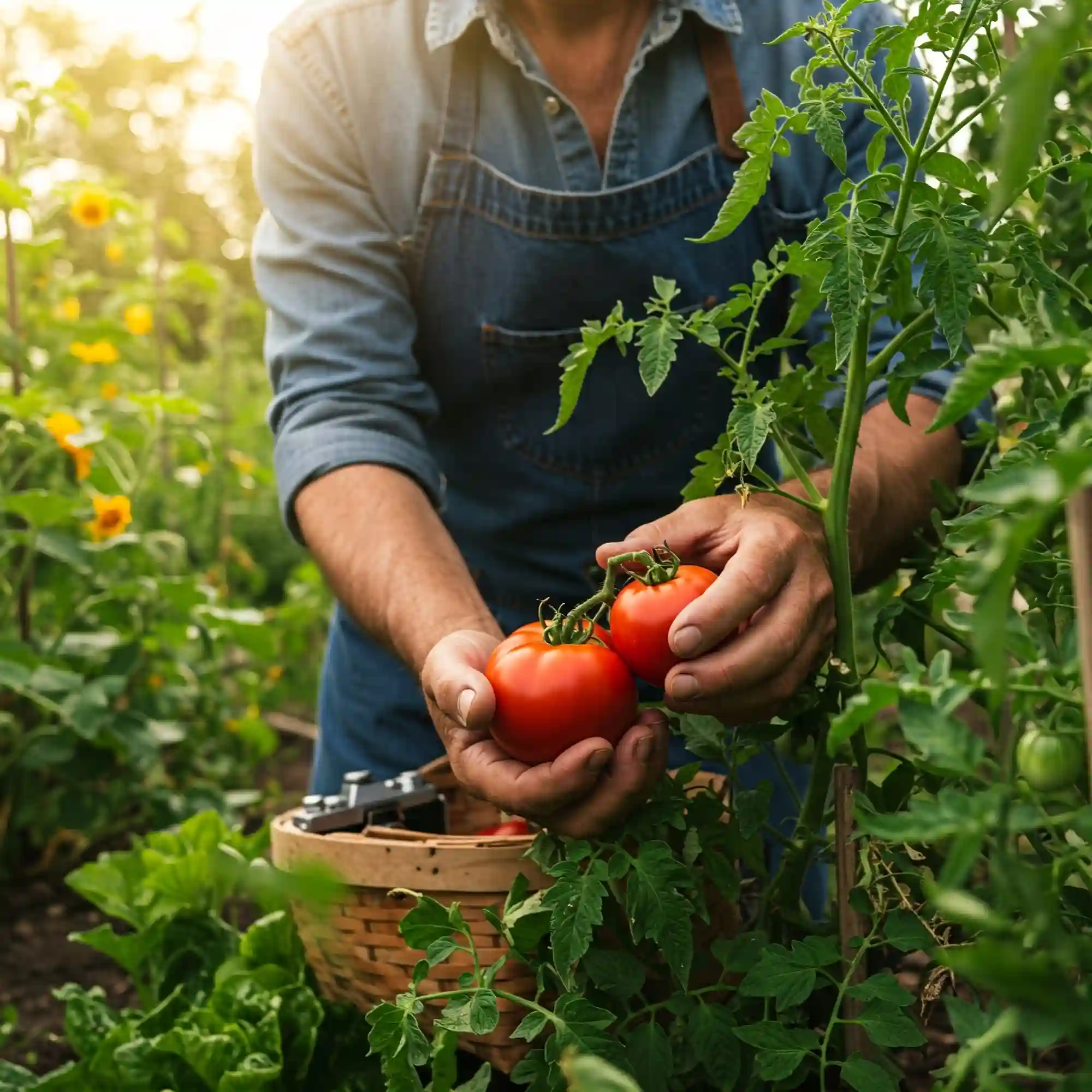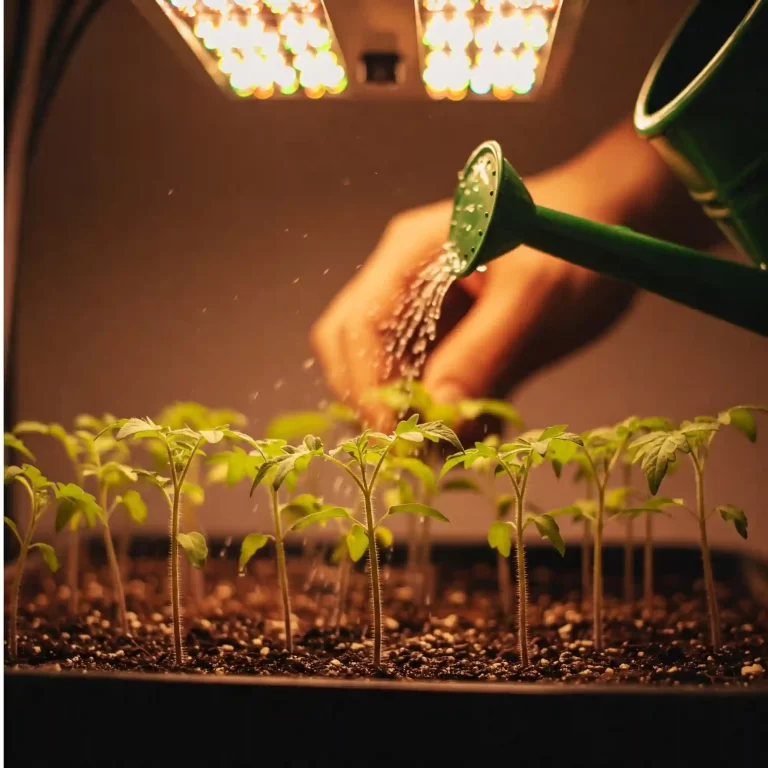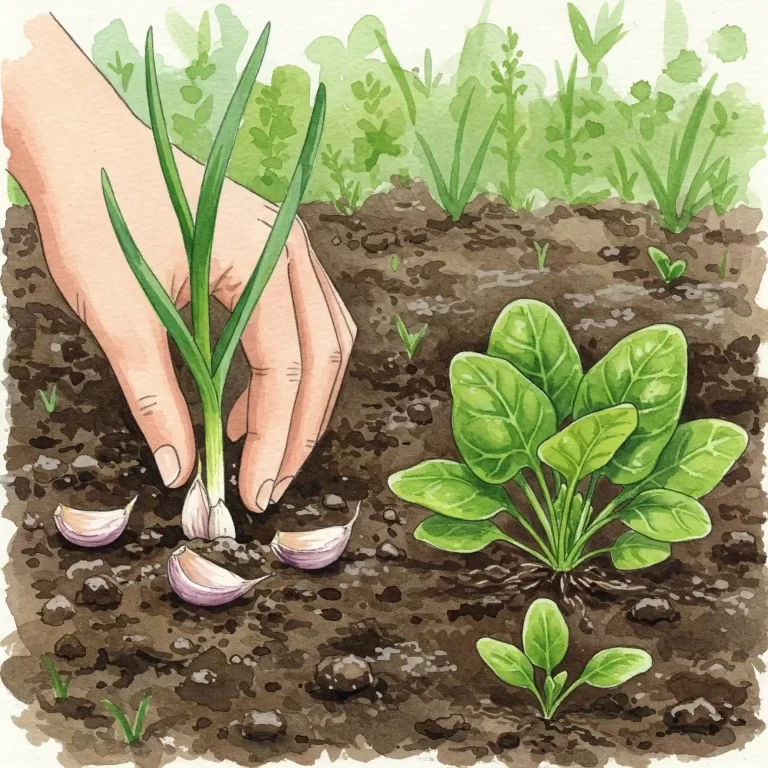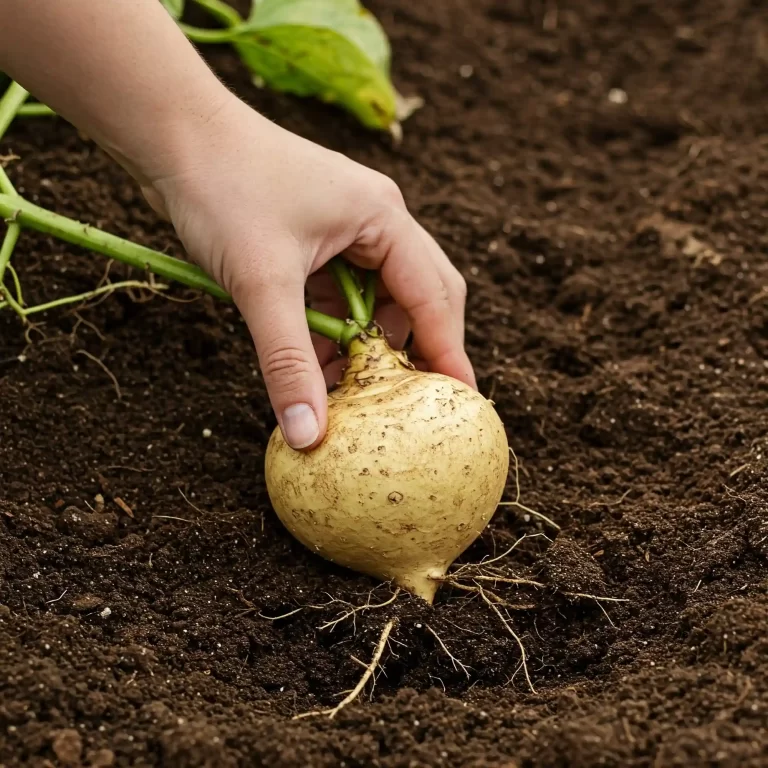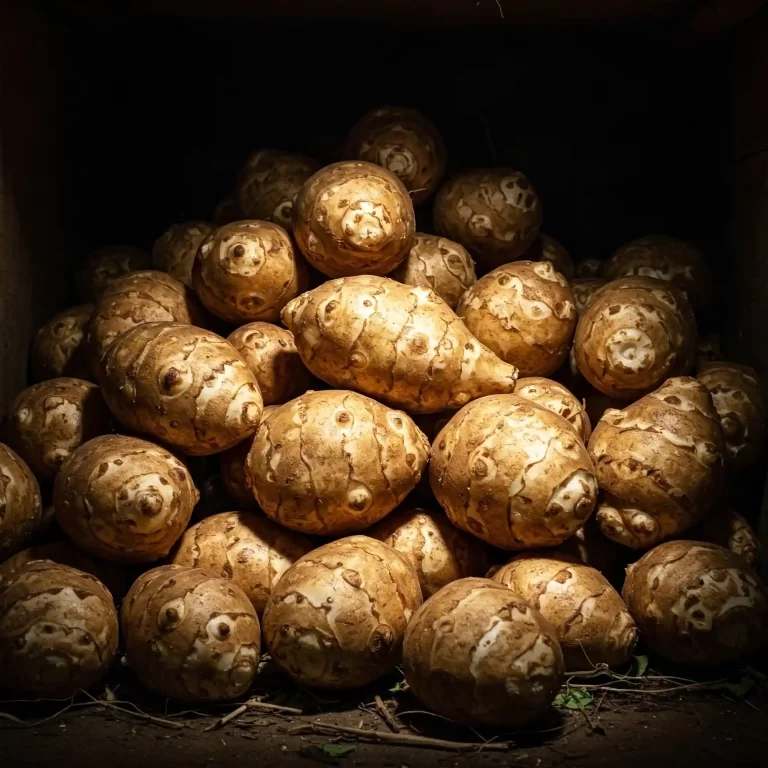Are you tired of dreaming of a lush, vibrant spring vegetable garden, only to be met with disappointing yields and struggling plants? You know the joy that comes from harvesting your own fresh produce, but the uncertainty of when to plant, what to plant, and how to care for your garden can feel overwhelming. I’ve been there, feeling the frustration of failed attempts and the desire for a thriving garden. That’s why I’ve put together these 7 secrets to help you, even as a beginner, grow a bountiful spring vegetable garden.
1. Plan Your Spring Vegetable Garden Like a Pro
Planning your spring vegetable garden is the crucial first step. You can’t just throw seeds in the ground and hope for the best. You need a strategy, a roadmap to success. First, assess your garden space and sunlight exposure. You need to understand how much sunlight your garden receives. Most vegetables need at least six hours of direct sunlight per day. If you have a shady spot, you’ll need to choose vegetables that tolerate partial shade, like lettuce or spinach. You need to know your space. If you are working with a small space, you should consider vertical gardening or container gardening.
Next, choose the right vegetables for your climate zone and local conditions. I recommend you consult your local agricultural extension office or a reliable online resource to determine your USDA plant hardiness zone. This will help you select vegetables that are well-suited to your region’s climate. Think about the last frost date, and the first frost date for your region.
Now, let’s talk about creating a planting calendar for optimal timing. This is where things get specific. I use a spreadsheet to track when I start seeds indoors, when I transplant them outdoors, and when I expect to harvest. You can find many free planting calendars online, or create your own. For example, if you want to plant tomatoes, you’ll need to start the seeds indoors about 6-8 weeks before the last frost date in your area.
Understanding companion planting for improved growth is another key aspect. Companion planting involves growing certain plants together to benefit each other. For example, planting basil next to tomatoes can improve the flavor of the tomatoes and deter pests. Carrots and onions also make excellent companions, as the onions repel carrot flies.
Here is a list of some common companion planting combinations:
- Tomatoes and basil: Improves flavor, deters pests
- Carrots and onions: Onions repel carrot flies
- Lettuce and radishes: Radishes deter pests, lettuce provides shade
- Beans and corn: Corn provides support, beans fix nitrogen in the soil
Here is a table of common vegetables and their specific planting times.
| Vegetable | Seed Starting (Weeks Before Last Frost) | Transplanting (Weeks After Last Frost) |
| Lettuce | 4-6 weeks indoors | 2-3 weeks before last frost |
| Spinach | 4-6 weeks indoors | 2-3 weeks before last frost |
| Peas | Direct sow 4-6 weeks before last frost | N/A |
| Radishes | Direct sow 2-3 weeks before last frost | N/A |
| Carrots | Direct sow 2-3 weeks before last frost | N/A |
| Tomatoes | 6-8 weeks indoors | 1-2 weeks after last frost |
| Broccoli | 4-6 weeks indoors | 2-3 weeks after last frost |
Case Study:
I remember when I first started gardening, I planted everything at the same time, without considering the different needs of each vegetable. My tomatoes got hit by a late frost, and my lettuce bolted because it got too hot. By creating a planting calendar and understanding my local climate, I’ve had much better success.
Important Fact:
The average last frost date is crucial for determining when to plant your spring vegetables. You can find this information from your local agricultural extension office or online resources.
Remember, planning is the foundation of a successful spring vegetable garden. Take the time to do it right, and you’ll reap the rewards of a bountiful harvest.
2. Master Soil Preparation for Spring Vegetables
Now that you’ve planned your garden, it’s time to focus on the foundation of a successful spring vegetable garden: healthy soil. Just like a house needs a strong foundation, your plants need a healthy and fertile soil environment to thrive.
Testing your soil pH and nutrient levels is the first step. Different vegetables have different pH preferences. For example, tomatoes prefer slightly acidic soil, while most other vegetables thrive in slightly alkaline soil. You can purchase a soil test kit from your local garden center or send a sample to a soil testing lab. A soil test will also reveal if your soil is deficient in any essential nutrients like nitrogen, phosphorus, and potassium.
Amending the soil with compost and organic matter is essential for improving soil structure and fertility. Compost is a rich source of nutrients and organic matter that helps improve drainage, aeration, and water retention. You can also add other organic matter like well-rotted manure, leaf mold, or cover crops to enrich your soil.
Preparing raised beds or containers for spring planting is another important step. Raised beds provide excellent drainage and warm up faster in the spring. If you’re using containers, choose well-draining potting mix and ensure they have adequate drainage holes.
How to create optimal soil drainage is crucial for preventing root rot. If your soil is heavy clay, you can improve drainage by adding sand or perlite. You can also create raised beds to improve drainage. If you are planting in containers, make sure they have adequate drainage holes.
Here are some tips for improving soil drainage:
- Add organic matter like compost, well-rotted manure, or leaf mold.
- Till the soil to break up compacted areas.
- Create raised beds to improve drainage.
- Avoid overwatering, which can lead to waterlogged soil.
Remember: Healthy soil is the key to a successful spring vegetable garden. By taking the time to prepare your soil properly, you’ll set your plants up for success.
3. Start Seeds Indoors for Early Spring Success
Starting seeds indoors gives your spring vegetables a head start and allows you to enjoy a longer harvest season. By germinating seeds indoors, you can transplant healthy seedlings into your garden once the weather warms up and the risk of frost has passed.
When and how to start seeds indoors depends on the specific vegetable and your local climate. As a general rule, you can find this information on the back of seed packets. Most cool-season vegetables, such as lettuce, spinach, and peas, can be started indoors 4-6 weeks before the last expected frost. Warm-season vegetables, like tomatoes and peppers, require 6-8 weeks of indoor starting time.
Choosing the right seed starting mix and containers is crucial for successful germination. A seed starting mix is a sterile, lightweight soil-less mix that provides the ideal environment for seed germination. You can use seed trays, peat pellets, or even recycled containers like egg cartons or yogurt cups.
Providing adequate light and warmth for germination is essential. Seedlings need plenty of light to grow strong and healthy. You can use grow lights or place them on a sunny windowsill. Maintain a consistent temperature of around 65-75°F (18-24°C) for optimal germination.
Hardening off seedlings before transplanting is a crucial step. Hardening off gradually exposes seedlings to outdoor conditions, helping them adapt to the changes in temperature, humidity, and wind. Start by placing seedlings outdoors for short periods, gradually increasing the time each day.
Here are some tips for successful seed starting:
- Use fresh seeds for the best germination rates.
- Sow seeds at the recommended depth as per seed packet instructions.
- Keep the seed starting mix consistently moist but not soggy.
- Avoid overcrowding seedlings, as this can lead to competition for light and nutrients.
- Monitor seedlings regularly for signs of pests or diseases.
By following these tips, you can successfully start your own seedlings and give your spring vegetable garden a head start.
4. How to Plant Cool-Season Vegetables for a Spring Harvest
Now that you’ve started your seeds indoors or purchased seedlings, it’s time to transplant them into your garden. Planting cool-season vegetables is a straightforward process, but there are a few key things to keep in mind.
- Best cool-season vegetables to plant in early spring: Some popular choices include lettuce, spinach, peas, radishes, and carrots. These vegetables thrive in cooler temperatures and can be planted as soon as the soil can be worked.
- Proper spacing and depth for planting seedlings: Refer to the seed packet instructions for the recommended spacing between plants. Generally, you should plant seedlings at the same depth they were growing in their containers.
- Techniques for transplanting seedlings without damaging roots: Handle seedlings gently by their leaves or stems, avoiding the roots. Gently loosen the roots from the container before planting. Water the seedlings well before and after transplanting.
- Tips for direct seeding vegetables in the garden: Some vegetables, like peas, radishes, and carrots, can be directly sown into the garden. Follow the seed packet instructions for proper depth and spacing. Keep the soil moist until germination occurs.
Here are some additional tips for successful spring vegetable planting:
- Harden off seedlings before transplanting to acclimate them to outdoor conditions.
- Water your garden regularly, especially during dry periods.
- Mulch around your plants to conserve moisture and suppress weeds.
- Monitor your plants for pests and diseases, and take action as needed.
By following these tips, you can successfully plant your cool-season vegetables and enjoy a bountiful spring harvest.
5. Protect Your Spring Vegetables from Frost and Pests
Even though spring brings warmer temperatures, it’s still important to protect your young plants from potential threats like frost and pests. Taking proactive measures will ensure your spring vegetables thrive and produce a bountiful harvest.
- Methods for protecting plants from late spring frosts: Late spring frosts can damage or even kill young plants. To protect your plants, you can use several methods:
- Frost cloths: These lightweight, breathable fabrics can be draped over plants to protect them from light frosts.
- Row covers: Row covers are similar to frost cloths but provide additional protection from pests and wind.
- Water plants before a frost: Water can release heat as it freezes, providing a slight warming effect to the plants.
- Bring container plants indoors: If you’re growing vegetables in containers, you can bring them indoors to a protected location before a frost.
- Natural pest control strategies for common spring garden pests: Chemical pesticides can harm beneficial insects and the environment. Here are some natural pest control strategies:
- Handpicking: Manually remove pests like aphids, slugs, and caterpillars from your plants.
- Neem oil: This natural oil can be used to control a variety of pests, including aphids, mites, and caterpillars.
- Insecticidal soap: This soap-based solution can be used to control soft-bodied insects like aphids and mealybugs.
- Beneficial insects: Encourage beneficial insects like ladybugs, lacewings, and praying mantises to your garden by planting flowers that attract them.
- Companion planting: Planting certain plants together can deter pests. For example, planting marigolds around your vegetable garden can help repel some pests.
- Identifying and addressing common plant diseases: Some common plant diseases that can affect spring vegetables include powdery mildew, blight, and root rot. To prevent and control these diseases:
- Plant disease-resistant varieties: Choose vegetable varieties that are known to be resistant to common diseases.
- Maintain good air circulation: Space plants properly to allow for good air circulation.
- Water at the base of the plants: Avoid overhead watering, which can spread diseases.
- Remove and destroy infected plants: If you notice any signs of disease, remove and destroy the affected plants to prevent the spread of the disease.
- Using row covers and mulches for added protection: Row covers can help protect plants from pests, frost, and even excessive heat. Mulch can help conserve moisture, suppress weeds, and regulate soil temperature.
Here are some additional tips for protecting your spring vegetables:
- Monitor your plants regularly for signs of pests or diseases.
- Take action as soon as you notice any problems.
- Use a variety of pest control methods to prevent pests from becoming resistant.
- Practice good sanitation in your garden to prevent the spread of diseases.
By taking these steps, you can protect your spring vegetables from frost and pests, ensuring a healthy and bountiful harvest.
6. How to Care for Your Spring Vegetable Garden for Maximum Yield
Now that your spring vegetables are planted and growing, it’s time to provide them with the care they need to thrive. Consistent care will ensure healthy plants and a bountiful harvest.
- Proper watering techniques for spring vegetables: Watering is crucial for healthy plant growth, but overwatering can lead to root rot. Water deeply and infrequently, allowing the top inch of soil to dry out between waterings. Avoid overhead watering, which can spread diseases and splash soil onto the leaves.
- Fertilizing your garden with organic or balanced fertilizers: Fertilizing your garden provides essential nutrients to your plants. Use a balanced fertilizer or organic options like compost tea or fish emulsion. Follow the fertilizer instructions carefully to avoid over-fertilizing, which can damage your plants.
- Weeding and mulching to maintain soil health: Regularly weeding your garden removes competition for water and nutrients from your vegetables. Mulching around your plants helps to conserve moisture, suppress weeds, and regulate soil temperature. Use organic mulch like straw, wood chips, or grass clippings.
- Supporting vining and tall vegetables: Some vegetables, such as tomatoes and peas, require support to grow vertically. Use stakes, cages, or trellises to keep them upright and prevent them from breaking.
Here are some additional tips for caring for your spring vegetable garden:
- Monitor your plants regularly for signs of pests or diseases.
- Take action as soon as you notice any problems.
- Use a variety of pest control methods to prevent pests from becoming resistant.
- Practice good sanitation in your garden to prevent the spread of diseases.
By providing your spring vegetables with the proper care, you can maximize their yield and enjoy a bountiful harvest.
7. Harvest Your Spring Vegetables at Peak Freshness
The culmination of your hard work is finally here: harvesting your delicious spring vegetables! Harvesting at the right time ensures peak flavor and freshness.
- Knowing when to harvest different spring vegetables: Each vegetable has its own optimal harvest time. Refer to seed packets or online resources for specific guidelines. Generally, harvest leafy greens like lettuce and spinach when they are young and tender. Harvest root vegetables like carrots and radishes before they become woody. Harvest fruits like tomatoes and cucumbers when they are ripe and full of flavor.
- Techniques for harvesting without damaging plants: Use clean and sharp tools to harvest your vegetables. Cut fruits and vegetables cleanly with a knife or shears. For leafy greens, use a sharp knife to cut them at the base of the plant. Avoid pulling on the plants, which can damage the roots.
- Storing and preserving your spring harvest: Enjoy your fresh harvest immediately or preserve it for later use. Many vegetables can be stored in the refrigerator for a few days. You can also preserve your harvest by freezing, canning, or dehydrating.
- Succession planting for a continuous harvest: To enjoy a continuous supply of fresh vegetables, practice succession planting. This involves planting seeds or seedlings at different times throughout the growing season. For example, you can sow lettuce seeds every two weeks to ensure a continuous supply.
Here are some additional tips for harvesting your spring vegetables:
- Harvest early in the morning or late in the evening when temperatures are cooler.
- Wash your hands thoroughly before and after handling vegetables.
- Store harvested vegetables in the refrigerator or a cool, dark place.
- Enjoy the fruits of your labor!
By following these tips, you can harvest your spring vegetables at their peak freshness and enjoy the delicious rewards of your hard work.
FAQ
When should I start seeds indoors for my spring vegetable garden?
The timing for starting seeds indoors depends on several factors, including your specific location, the desired harvest time, and the type of vegetable you are growing. As a general guideline, aim to start seeds indoors 4-6 weeks before the last expected frost in your area for cool-season crops like lettuce and spinach. For warm-season crops like tomatoes and peppers, start seeds 6-8 weeks before the last frost.
What are the best cool-season vegetables for early spring planting?
Cool-season vegetables thrive in cooler temperatures and can be planted as soon as the soil can be worked in early spring. Some excellent choices for early spring planting include:
- Lettuce
- Spinach
- Peas
- Radishes
- Carrots
- Beets
- Swiss chard
- Kale
How do I protect my spring vegetables from late frost damage?
Late spring frosts can damage or even kill young plants. Here are some effective methods to protect your spring vegetables:
- Frost cloths: Lightweight, breathable fabrics that cover plants and protect them from light frosts.
- Row covers: Similar to frost cloths, but provide additional protection from pests and wind.
- Water plants before a frost: As water freezes, it releases heat, providing a slight warming effect to the plants.
- Bring container plants indoors: If you are growing vegetables in containers, you can move them indoors to a protected location before a frost.
What are the ideal soil amendments for spring vegetable growth?
Healthy soil is essential for vigorous plant growth. Incorporating organic matter into your soil improves its structure, drainage, and nutrient content. Some excellent soil amendments for spring vegetable gardens include:
- Compost: A rich source of nutrients and organic matter that improves soil structure and drainage.
- Well-rotted manure: Adds nutrients and improves soil texture.
- Leaf mold: Improves soil aeration and water retention.
- Vermiculite: Increases soil aeration and water-holding capacity.
How to prepare raised garden beds for spring vegetables?
Raised beds offer several advantages, including improved drainage, warmer soil temperatures, and easier access for gardening. Here’s how to prepare raised beds for spring vegetables:
- Choose a location: Select a sunny location with good drainage.
- Build the bed: Use untreated wood, bricks, or other materials to construct the raised bed.
- Fill the bed: Fill the bed with a mixture of high-quality garden soil, compost, and other organic matter.
- Amend the soil: Test the soil pH and add amendments as needed to create the optimal conditions for your chosen vegetables.
Organic pest control methods for spring vegetable seedlings.
Chemical pesticides can harm beneficial insects and the environment. Here are some effective organic pest control methods for spring vegetable seedlings:
- Handpicking: Manually remove pests like aphids, slugs, and caterpillars from your plants.
- Neem oil: A natural oil that can control a variety of pests, including aphids, mites, and caterpillars.
- Insecticidal soap: A soap-based solution that is effective against soft-bodied insects like aphids and mealybugs.
- Beneficial insects: Encourage beneficial insects like ladybugs, lacewings, and praying mantises to your garden by planting flowers that attract them.
- Companion planting: Planting certain plants together can deter pests. For example, planting marigolds around your vegetable garden can help repel some pests.
What vegetables thrive in containers during the spring season?
Many vegetables can be successfully grown in containers, making them a great option for those with limited space. Some excellent choices for spring container gardening include:
- Lettuce
- Spinach
- Radishes
- Herbs
- Bush beans
- Dwarf varieties of tomatoes and peppers
How to optimize watering and mulching for spring vegetable harvest?
Proper watering is crucial for healthy plant growth. Water deeply and infrequently, allowing the top inch of soil to dry out between waterings. Avoid overhead watering, which can spread diseases and splash soil onto the leaves.
Mulching around your plants helps to conserve moisture, suppress weeds, and regulate soil temperature. Use organic mulch like straw, wood chips, or grass clippings.
Beginner’s guide to planning a successful spring vegetable garden.
If you’re new to gardening, start small and choose a few easy-to-grow vegetables. Consider starting with lettuce, spinach, radishes, or bush beans. Plan your garden based on your local climate and the availability of sunlight.
How to create a planting schedule for spring vegetable varieties.
A planting schedule helps you plan when to sow seeds, transplant seedlings, and harvest your crops. Consider the following factors when creating your planting schedule:
- Your local climate: Determine your last frost date and the average growing season.
- Vegetable preferences: Choose vegetables that you enjoy eating and that are well-suited to your climate.
- Seed starting requirements: If starting seeds indoors, calculate the appropriate start date based on the desired transplant date.
- Succession planting: Plant seeds or seedlings at intervals to ensure a continuous harvest throughout the spring and summer.
Additional Resources:
- Your local agricultural extension office
- Online gardening resources and forums
- Seed company websites
- Gardening books and magazines
Conclusion
Growing a successful spring vegetable garden takes time, effort, and dedication. However, the rewards are well worth it. By following these 7 secrets and adapting them to your specific needs and conditions, you can create a thriving garden and enjoy a bountiful harvest of fresh, homegrown produce. Remember to start planning early, prepare your soil properly, and provide your plants with the care they need. Happy gardening!
Additional Resources:
- Your local agricultural extension office
- Online gardening resources and forums
- Seed company websites
- Gardening books and magazines
Please let me know if you have any further questions or would like to discuss other gardening topics.
